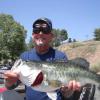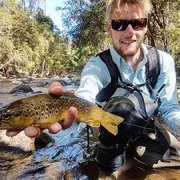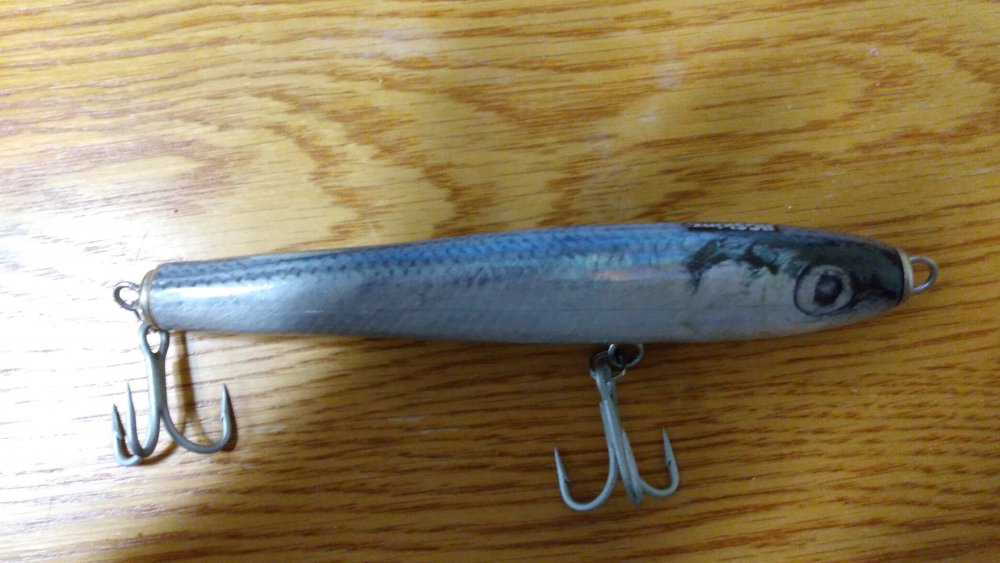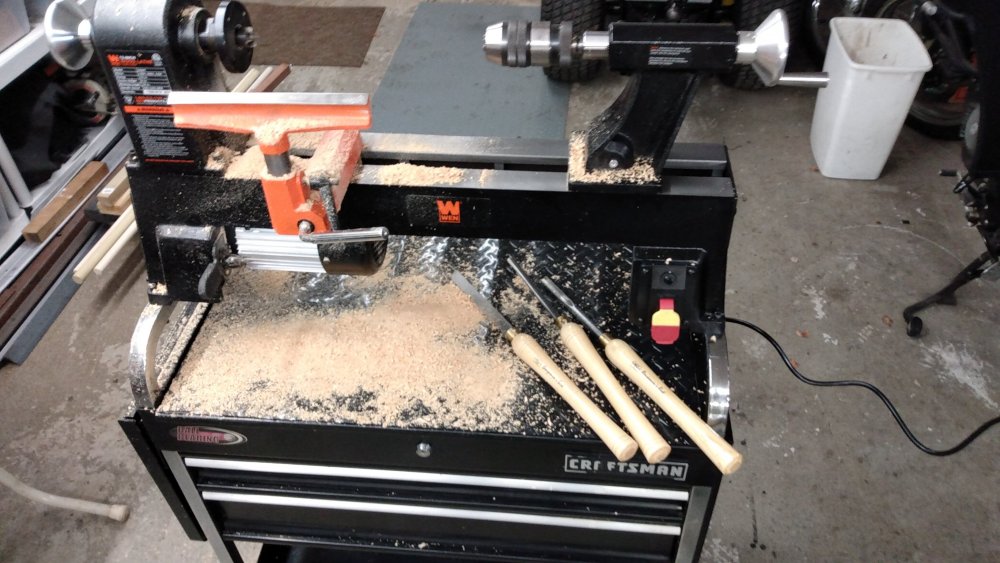Leaderboard
-
in all areas
- All areas
- Images
- Image Comments
- Image Reviews
- Albums
- Album Comments
- Album Reviews
- Topics
- Posts
- Stories
- Story Comments
- Story Reviews
- Classified Ads
- Classified Ad Comments
- Classified Ad Reviews
- Records
- Record Comments
- Record Reviews
- Websites
- Website Comments
- Website Reviews
- Status Updates
- Status Replies
-
Custom Date
-
All time
February 2 2011 - April 19 2024
-
Year
April 19 2023 - April 19 2024
-
Month
March 19 2024 - April 19 2024
-
Week
April 12 2024 - April 19 2024
-
Today
April 19 2024
-
Custom Date
11/11/2020 - 11/11/2020
-
All time
Popular Content
Showing content with the highest reputation on 11/11/2020 in all areas
-
As I do not build gliders or jerk baits, all that I can do is throw a lot of theory out there, to help you understand how the lure works. Understanding the theory helps the builder to design a lure to take advantage of the forces accordingly. Of course, experienced glider builders will have already figured this stuff out even if they do not know the reasons why their lures work. Experience is a valuable tool, theory only gives you a ‘leg up’ at the start. As you have already figured out, this is a very complex issue with multiple factors to be taken in to consideration. The apparent ideal solution for a lure to swim a long distance with efficiency is an arrow with all the weight at the front. But we already know that this would not work in water as it does in air because of the nose down attitude, like I said; multiple factors. Also, the super aerodynamic shape of an arrow is designed NOT to produce vortices. When we fire an arrow in air for maximum distance, we apply great force and we aim up at 45°, and due to air resistance, the arrow falls at 70°+. Target sports for darts and archery only use the top of the flight arc. Also the arrow is designed not to swing from side to side, a definite requirement of the lure. As for the lure; we want it to travel in a straight line as far as possible, then on the next pull, we want the same again only in a different/opposite direction (left/right). So, what causes this desired change of direction? The answer is vortices, my favourite subject. A waggling lipped lure generates a rapid series of vortices that cause the lure to waggle left and right. The sharp lip causes vortices to be created at a relatively low speed, and the theory of the ‘Kármán vortex street’ causes the vortices to rapidly alternate left/right. But still, the lipped lure requires a minimum speed to operate. The lipless glider still creates vortices but has a much higher minimum speed to create the vortex. The operation of the lure is to tug or jerk the lure. A single vortex is created and no more as the lure is already slowed below the vortex threshold. This swirling vortex sucks on the rear half of the lure body causing it to change direction. The next jerk causes the vortex to form across the back of the lure and sucks it in the opposite direction. As the lure slows down, that single vortex is still there, working on the lure, sucking it further around. This effect can be seen on multiple section swim-baits; a steady, constant retrieve causes alternating vortices that act on the rear of the lure causing that beautiful snake action. BUT, if you jerk the jointed swim-bait, the lure curls around even 90° and beyond. Check out the video, you can almost see the vortex sucking the lure around in the jerk sections with a little imagination. The above is the basic mechanics of what is going on. Now we have to figure out how to use the mechanics, the theory, to make the glider lure swim how we want. To start with, I use an analogy that I have talked about many times; Grab a 2 feet length of dowel in the middle in your fist. Rotate your wrist rapidly left and right. The dowel swings fairly easily. Now add ¼ pound of lead at each end of the dowel and repeat. The dowel is much more difficult to swing left and right. Now put the two weights at the center of the dowel and repeat. Once again, the dowel swings easily. This is the effect of inertia. We want the glider to change direction but we want to resist the continuing change of direction. The solution is to increase resistance to direction change by increasing inertia. By placing weight at the front and rear we increase inertia and resist the change of direction. But as always, design is a compromise. If the inertia of the lure is too great then the change of direction will be minimal or even nonexistent. You may end up with a straight swimming torpedo. Another feature is the depth of the lure body that the suction of the vortex acts upon. You may think that a deeper body with a larger surface area would resist the side movement, this would be incorrect at least according to theory; the suction force of the vortex acts on the side surface area of the lure, reduce the area and reduce the force. But yet again, design is a compromise. If you reduce your lure to a torpedo cylinder, no vortex will be created in the first place. If your lure swings excessively as it slows down then consider reducing the body depth. The reduced depth will also reduce resistance to forward motion. Once the glide motion clears the vortex, it will travel aerodynamically like a torpedo. We only require the vortex sucking effect at the initial tug of the lure, if the glider can swim clear of the vortex then it will continue in a straight line for more distance. If the glide distance is short and the lure continues to turn; reduce body depth and/or extend the weights to front and rear. If the lure does not change direction then no vortex has been created, you have a torpedo. You can add a flat to the top of the nose to help the vortex form, or increase the depth on the next build. Gliders need to naturally float horizontal, but the rest is a compromise between body depth and ballast distribution. Dave1 point
-
Never operated a wood lathe until tonight. Sharpened the turning tools and had at it with a piece of poplar. I think it came out nice. Jigskinz for now until I master airbrush. The issue I had was getting enough weight into it. I drilled a couple holes on the underside and balanced with a little heads up position. But I wanted to get it to 4oz and it turned out 3.5oz. Will be fishing it in Cape Cod Canal tomorrow!1 point
-
Unfortunately, the PLA melting point is roughly the same temperature that you are pouring, and so severe distortion is unavoidable. You need to find a printing material with a higher temperature tolerance. Distortion can be mitigated by load spreading plates and plenty of clamping. But you still have the problem of pouring into an insulating material with poor cooling qualities. I don't own a printer but class myself as a CAD expert seeing as CAD design has been my job for 35 years. Also, I am hard-baits and so not hampered by the extreme temperatures of the soft-bait pourer. The best that you can do IMO, is print a master and then cast it in POP or some other casting material that can take the heat. As far as hard-baits is concerned, my plan was to print a PLA negative mold to cast a positive mold in another material, designing the PLA negative such that the resulting positive was symmetrical, in other words, both mold halves were identical, so only one PLA master was needed. Unfortunately, the heat distortion from the exothermic reaction of POP or other cast materials made mating the halves impossible. With my financials being stretched and 3D prints costing $100 a time, I cannot throw money at a whim. However, I have a lure design on the go that needs building, and the replication accuracy required means that only 3D printing can give me what I want. I will have to design a positive and print both halves for pouring polyester resin. The design will have a ridiculous number of clamping holes and load spreading wooden plates. The design will help me to determine the minimum clamping required as I try various clamp configurations. I am trying to summon up the enthusiasm to hit the design again as lure wall thickness was a problem on my last attempt, giving incomplete pours. I really do need my own printer as this project is costing me way too much in 3rd party services. I know it makes fiscal sense, but I want to see some success before I commit. The beauty is that if the design is successful, I could take it straight to production injection molding on a grand scale with confidence. Good luck with your project. Dave1 point
-
Been doing it for a few months. I have a basic FDM printer, the ANET A2. I can print moulds and have them inject well with PLA at 0.1mm and 40% fill, but the moulds will warp from the heat over time. Its great for testing ideas, but you do end up with lines from the layers in the final bait. I know some guys who use resin printers, which can print even finer again and they say they get no lines on their baits, but i havent seen the baits close up to be sure.1 point
-
Cool! Thanks for the pics, and the explanation. That is a massive amount of hook rash! I see why you changed it to top hook. Clear fingernail polish will protect the rashed wood without changing it's looks, or affecting the action.1 point
-
Nice! Depending on the lure's size, you may have to give it a fatter profile to give yourself enough room to add additional belly ballast. You can always thin it afterward with a sanding block to remove some of the buoyancy the fatter body will provide.1 point
-
Density is unevenly distributed in wooden bodies. With turned bodies you have the advantage of being able to perform a floating roll test to determine the lowest point in the float and the best location for the ballast (seal body first to prevent water ingress). I am sure you will have read about this on 'Stripers' forum, but just thought that I would mention it. Dave1 point






.thumb.jpg.c640bd17943166d703155016fa2bd0b5.jpg)
